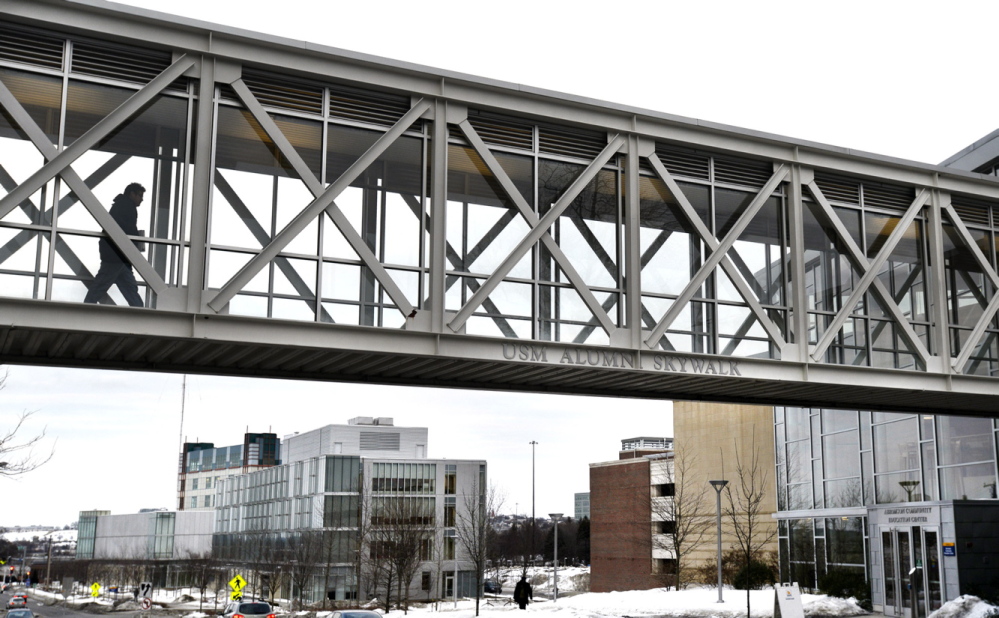PORTLAND — Something is rotten in Bangor.
The state’s public college campuses – where faculty teach and students learn – face huge cutbacks. But the University of Maine System office in Bangor – where no one teaches anybody anything – spends $20 million a year, almost 10 percent of the state’s higher education appropriation.
Just take a look at the budget. The $20 million the system office spends not teaching exceeds the $14.95 million spent annually by the three smallest University of Maine campuses (at Fort Kent, Machias and Presque Isle). If it doesn’t teach, doesn’t grade, doesn’t create assignments or even talk with the faculty who do all these things, how does the system blow through 20 million bucks a year?
There are 291 people employed at the University of Maine System office, of whom 87 (30 percent) are administrators. One of the most senior, and expensive, positions in the system is that of the vice chancellor for academic affairs. That’s a provost, and there’s a provost on each campus. The system has a chief student affairs officer, as does each campus.
In Bangor offices that duplicate campus level human resources, information technology and finance offices you’ll find flocks of directors, executive directors, assistant directors and coordinators. How efficient.
The University of Maine System is not unique. Just last month the Delta Cost Project reported that “Growth in administrative jobs was widespread across higher education . . . As the ranks of managerial and professional administrative workers grew, the number of faculty and staff per administrator continued to decline.”
Here’s how this plays out in Maine. Since 2008, 311 positions have been eliminated across campuses and within the system office. Reductions in hourly positions (191) comprise 61 percent of total job losses. Faculty losses (105) account for 34 percent of jobs eliminated. Just 5 percent of the job losses (15 positions) came from the ranks of administrators.
The trade-off between funding the system administration and funding education is stark. Every million dollars the system sinks into the bureaucracy is an additional million bucks Maine students have to cough up. Most of our students already work. Working more lowers grades, and diminishes the odds of college completion. Or Maine’s students can borrow more. Great. These choices are the direct result of decisions made by system administrators.
The public’s been told the University of Maine System is collapsing. But it’s not. Assets and reserves are growing. Liabilities are declining. Year-over-year revenues exceed expenses. Operating cash flows are positive.
Don’t believe me? S&P speaks glowingly about the system’s financial strength and gives the UMS an AA- bond rating, the fourth highest rating possible. Why? Because the system has such strong reserves and positive cash flows. In 2013 the total reserves of the system reached $283 million, because it was able to generate $17 million of operating cash flows. In each of the past six years, the system has taken in more than it’s spent. But instead of funding education, they’ve built reserves.
Here’s another stunning fact. Over the last six years – while pleading poverty – the system office decided to increase unrestricted net assets from $88 million to $188 million.
Help me out here: How can the University of Maine System be both so broke it has to eliminate another 165 positions and cut dozens of programs, while at the same time it can stash away $100 million?
Any claim that the system is in financial trouble, or that it’s broke, is absurd. If anything’s broken it’s the system’s priorities. The system devotes a mere 27 percent of total expenses to the core academic mission. Every year for the last five years the share of expenses devoted to education has declined while the share sucked up by the administration has increased.
Bain Higher Education Consulting says, “As colleges and universities look to areas where they can make cuts and achieve efficiencies, they should start farthest from the core of teaching and research. Cut from the outside in, and build from the inside out.”
The University of Maine System is taking the exact opposite tack. They’d rather destroy public higher education based on the false claim that there’s a financial emergency, than reduce their bloated administrative ranks.
— Special to the Telegram
Copy the Story LinkSend questions/comments to the editors.



Success. Please wait for the page to reload. If the page does not reload within 5 seconds, please refresh the page.
Enter your email and password to access comments.
Hi, to comment on stories you must . This profile is in addition to your subscription and website login.
Already have a commenting profile? .
Invalid username/password.
Please check your email to confirm and complete your registration.
Only subscribers are eligible to post comments. Please subscribe or login first for digital access. Here’s why.
Use the form below to reset your password. When you've submitted your account email, we will send an email with a reset code.